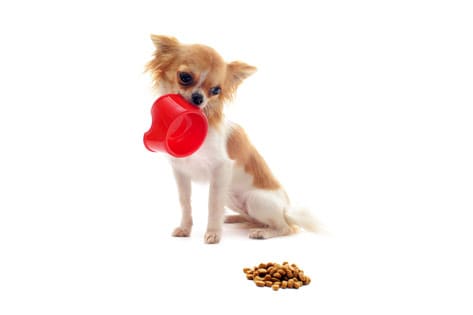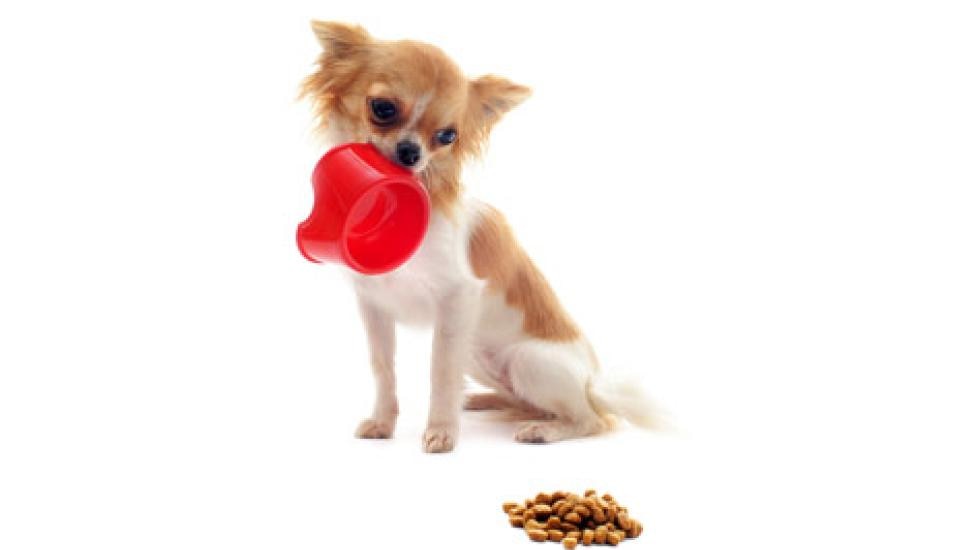Rotation Feeding for Pets
The Benefits of a Rotational Diet

Have you ever had the same meal for an entire week? A month? A year? What if you had to eat the same exact meal for your whole life? This is essentially what most of us do to our pets — choose a food brand and stick with it. And while keeping your dog or cat on a consistent diet isn’t unhealthy, some veterinary nutritionists are raving about an alternative called rotation feeding. Click here to watch a video by Dr. Karen Becker about rotation feeding for pets.
What is Rotation Feeding?
Rotation feeding is really all about variety. It’s a holistic and nutritional philosophy that offers your pet a dietary alternative — varying both food proteins (chicken, beef, lamb, etc.) and food forms (raw, frozen, wet, dry, etc.). This way your dog or cat is able to enjoy and experience different flavors and textures.
How is Rotation Feeding Beneficial?
Proponents of rotation feeding boast about the many health and behavioral benefits, but here are four particular benefits that may interest you:
1. A more complete approach to nutrient intake
Many pet foods on the market are designed to be complete and balanced. However, food ingredients each have a unique nutritional profile. Components such as amino acids, vitamins, minerals and fatty acids can be found in different quantities, depending on the type of food. By combining specific complete diets, rotation feeding allows your pet to experience the benefits of two or more foods.
2. Creates excitement during mealtime
Some dogs and cats become uninterested in their food once they are accustomed to certain textures, flavors and even brands. With rotation feedings, it’s like a new tasty adventure is waiting for your pet every time they go to their food bowl.
3. Increase water consumption
Water is critical to all life. However, not all pets drink sufficient water. One way to remedy this is to add high moisture foods to your dog’s diet, such as raw frozen foods. This will often prevent health problems such as urinary issues, liver disease and constipation.
4. Reduce risk of food allergies and intolerances
If consistently fed the same food, some dogs and cats may develop an allergy or intolerance to common ingredients such as chicken, beef, wheat, corn, or soy. Rotation feeding reduces the risk because the ingredients and formulations are not in your pet’s diet long enough for him or her to develop an adverse reaction, such as vomiting, diarrhea and hives.
When Should I Start My Pet on Rotation Feeding?
It’s much easier to start rotation feeding while he or she is still a puppy or kitten (assuming they are already eating solid food), but that’s not to say an older dog or cat can’t benefit from rotation feeding too. It just may take a little bit more patience. Often, it’s recommended that small amounts of the new food be blended into the regular diet, so that your pet may become accustomed to the taste and texture of the food slowly, especially if you are switching between brands with different formulations.This may be an issue for some pets.
The most important part is that you consult a veterinarian or a veterinary nutritionist before beginning rotation feeding. They can assist you in choosing which foods are best for the rotation and ensure that you continue to provide your dog a balanced diet. Also, keep a feeding diary. Nothing fancy, but keeping track of what you are feeding your dog will help immensely should he or she have difficulty processing a new pet food.
Image: cynoclub / Shutterstock
